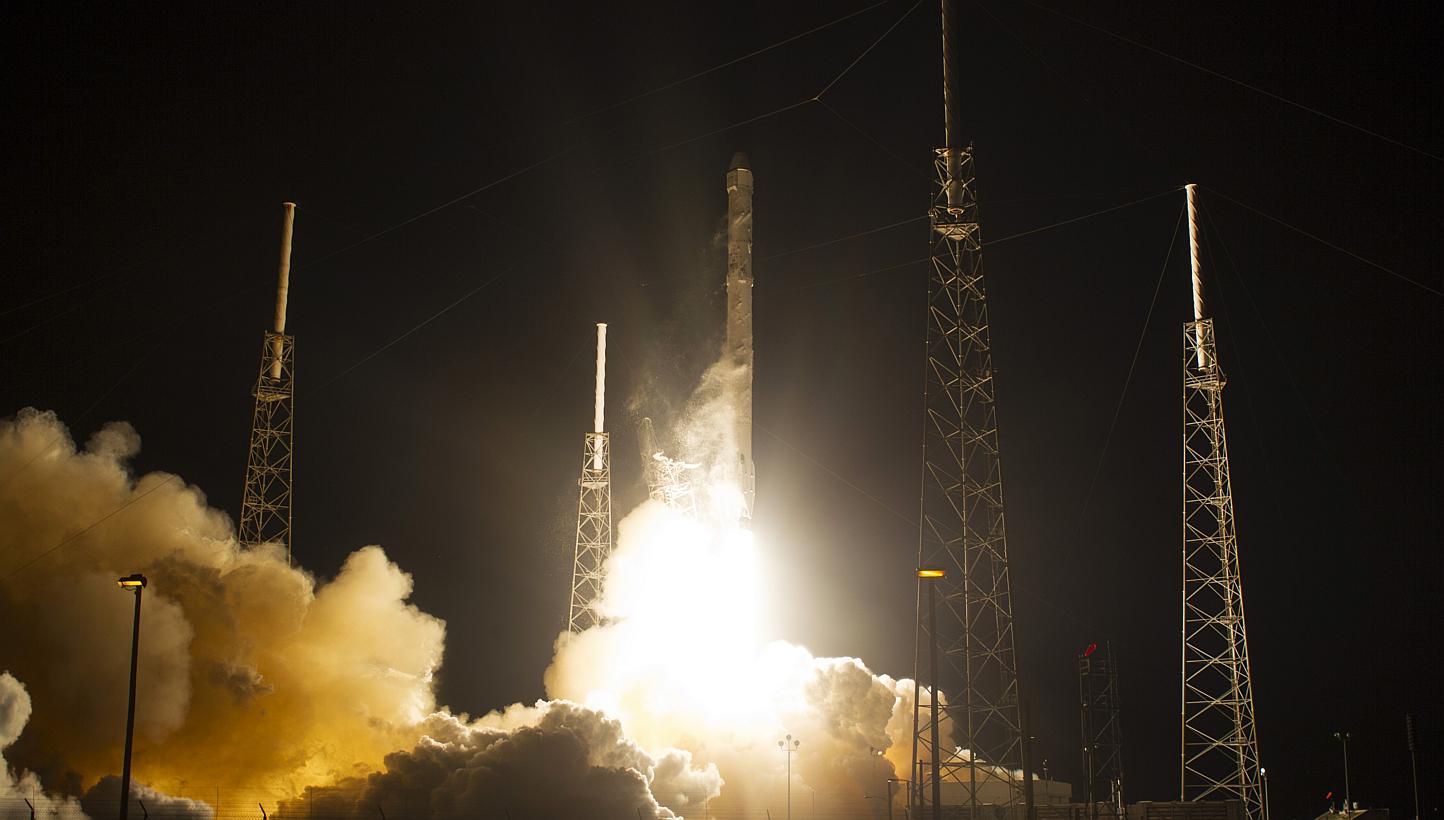SpaceX rocket to launch weather satellite into deep space to monitor solar 'tsunamis'
Sign up now: Get ST's newsletters delivered to your inbox

The unmanned Falcon 9 rocket launched by SpaceX, on a cargo resupply service mission to the International Space Station, lifts off from the Cape Canaveral Air Force Station in Cape Canaveral, Florida Jan 10. -- PHOTO: REUTERS
Follow topic:
CAPE CANAVERAL, Fla. (REUTERS) - A SpaceX rocket is scheduled to launch a US satellite from deep storage to deep space, where it will keep tabs on solar storms and image Earth from nearly 1.6 million km away.
The Falcon 9 rocket is targeted for launch at 7.10 AM Singapore time on Monday from Cape Canaveral Air Force Station in Florida.
Perched on top of the booster is the Deep Space Climate Observatory, nicknamed DSCOVR, and jointly owned by NASA and the National Oceanic and Atmospheric Administration.
DSCOVR replaces a 17-year-old satellite monitoring for potentially dangerous solar storms. Tsunamis of charged particles from the sun, called coronal mass ejections, can disrupt GPS and other satellite signals, block radio communications and impact electric power grids on Earth, Tom Berger, director of NOAA's Space Weather Prediction Centre, said at a pre-launch news conference on Saturday.
The satellite's original mission, championed by then-Vice President Al Gore, was to provide a near-continuous view of Earth that would be distributed via the Internet in an attempt to raise environmental awareness, much like the iconic Apollo 17 "Blue Marble" picture of Earth did in the early 1970s.
The satellite, then called Triana - and lampooned as "GoreSat" - was due to launch on the ill-fated space shuttle Columbia mission in 2003, but it was pulled from the manifest and put into storage after President George HW Bush moved into the White House.
A decade later, Triana was refurbished and reborn as the DSCOVR solar observatory. In addition to instruments to study the solar wind, it has two sensors for Earth science observations, such as tracking volcanic plumes from deep space, measuring ozone and monitoring droughts, flooding and fires.
The satellite also will take pictures of Earth that will be posted on the Internet every 24 hours, fulfilling in part Gore's dream.
After sending DSCOVR on its way to orbit, the rocket's discarded first stage will attempt to land itself on a platform floating in the Atlantic Ocean about 370 miles (595 km) northeast of the launch site.
SpaceX has been testing technology to reuse its rockets, potentially slashing launch costs. An initial ocean landing attempt in January came close, but the rocket ran out of hydraulic fluid to manoeuvre stabilizing fins.
"There might be other issues ahead of us. Obviously, this is a difficult thing," said Hans Koenigsmann, a SpaceX vice president. "We have plenty of opportunities over the next year to try this out and to perfect the landing part."

